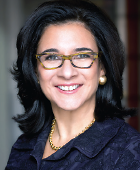21st Century Cures

Remember what it was like when you were in college and you went to your favorite band’s concert? It was exciting, uplifting, thrilling, moving: 20 different emotions all jumbled up. That’s what it was like.
President Obama was scheduled to sign the 21st Century Cures Act into law on Tuesday, December 13, 2016. APA received one invitation to attend the ceremony at the White House: one. I was honored and grateful to have the opportunity to represent our great Association.
Now, I had been to the White House before—on a tour. This was sure to be different. We were asked to arrive between 1 p.m. and 1:15 p.m. and notified that no one would be allowed to enter before 1 p.m. I arrived at the appointed hour, right on the dot, deposited curbside near the Southwest Appointment Gate, courtesy of Uber.
As I scanned what seemed like a huge crowd, I started walking to the end of the line. I walked no more than 10 feet when I saw two of my dear colleagues from the American Foundation for Suicide Prevention. “Come stand in line with us!” they said. Boy, was I lucky. John had been to these types of events many times and, as an old hand, knew exactly what to do and told me: “Don’t worry. We will get great seats.”
We went through security, just like at the airport, but with some extra steps: “Last four digits of your Social Security number, ma’am?” I had been cleared through a security screen as an invitee; they were just checking. Just to be sure.
We poured into the auditorium of a building adjacent to the White House that looked to hold some 150 people. The first four rows were reserved for senators, members of Congress, and high-ranking federal officials. We sat in the sixth row, in front of the press. Then, we waited. The room was filling up quickly, and it became apparent that some would be standing. The crowd was abuzz. Everyone was milling around saying hello to their friends and making new ones. Pushing myself beyond my comfort zone, I got up. I walked up to some of those I knew enough to say hello and chatted with them. I walked up to people I had always wanted to know and introduced myself. What an opportunity! Most of all, I was impressed with the warm, collegial manner of the attendees. It did not matter if they did not know you. They were gracious, and they were friendly.
The ceremony, scheduled for 2 p.m., did not start until 2:30. At that point, a video in which the POTUS talked about science, technology, and being a nerd started to play. We were all shifting in our seats, iPhones at the ready.
The delegation walked onto the stage. A hush fell over the crowd. Former West Virginia Sen. David Grubb delivered a heart-wrenching story about his daughter, lost to opioids. Then, President Obama and Vice President Biden came onto the stage. Loud, protracted applause. What followed was one of the most moving ceremonies I have witnessed.
President Obama and Vice President Biden acknowledged the deep love and respect they have for each other. They spoke about how this was the last bill that President Obama would sign into law. They talked about the amazing things that were in the new law—it included funds for medical research through the National Institutes of Health, including $1.5 billion for the Brain Research Through Advancing Neurotechnologies (BRAIN) Initiative; teeth for enforcing mental health care parity; strategies to improve the recruitment, training, and retention of a mental health and substance use disorder workforce; coordination of fragmented mental health resources across federal departments and agencies through the establishment of an assistant secretary for mental health and substance use (ASMH); grants to support integrated care models for primary care and behavioral health care services; a training demonstration program for medical residents and fellows to practice psychiatry and addiction medicine in underserved, community-based settings; grants to states to establish, improve, or maintain programs for screening, assessment, and treatment services for women in the peripartum for depression; decreasing criminalization of individuals with mental illness by supporting mental health courts and crisis intervention teams; combating the opioid epidemic ($1 billion over two years); and much, much more.
The 21st Century Cures Act is a huge step for mental health: the country is poised to make some major gains. Yes, it is emotional; yes, it is historic; but most importantly, our patients will see tangible improvements in their care. What a lovely way to round out 2016! ■



